Gold Note Vasari Gold and Donatello Red Phono cartridges by Greg Simmons
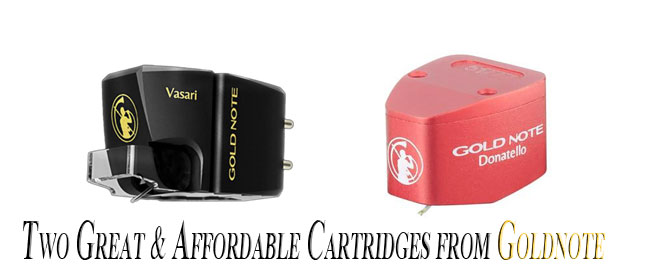
Civil Unrest
 I shouldn’t find this shocking anymore, but against the background of protests in all fifty states that erupted following the murder of George Floyd, I’ve read or participated in several conversations in online jazz forums where a reference to Black Lives Matters – usually a post from the moderator – draws an argument that usually starts like this: Why does race/civil rights/politics always come up when we’re talking about jazz? Can’t we just enjoy the music without being bothered with all that? In one version of this conversation this past week (June 10th) some fellow even argued jazz wasn’t really black music because Bill and Gill Evans were both white.
I shouldn’t find this shocking anymore, but against the background of protests in all fifty states that erupted following the murder of George Floyd, I’ve read or participated in several conversations in online jazz forums where a reference to Black Lives Matters – usually a post from the moderator – draws an argument that usually starts like this: Why does race/civil rights/politics always come up when we’re talking about jazz? Can’t we just enjoy the music without being bothered with all that? In one version of this conversation this past week (June 10th) some fellow even argued jazz wasn’t really black music because Bill and Gill Evans were both white.
That’s just nonsense.
It shouldn’t take a paunchy white suburban guy to point this out, but I’ll do it anyway: Jazz is black music. From the first unrecorded notes of Buddy Bolden, virtually every musical advance has been the product of black musicians. Yes, white musicians also adopted this music, in many cases with wonderful results, but their contributions are dwarfed by Satchmo, Bird and Art to name just three on a list that goes on far to long to write here.
 More importantly, in the current climate of outrage, fear, and a the nascent understanding by the rest of America that this might be the time to finally improve all of it, it’s more important than ever to recognize that the history of jazz in the twentieth century is inextricably linked with arc of the American civil rights movement and the injustices it sought to redress. When Jelly Roll Morton sang, “Mississippi water, tastes like turpentine,” he wasn’t critiquing its gustatory qualities; When Duke Ellington was the headliner at the Cotton Club he wasn’t allowed to walk in through the front door (and in Harlem for heaven’s sake!); Thelonious Monk was unable to play clubs in New York during his most creative years in the 1950s because he’d lost his cabaret card, a system the police notoriously used against black musicians, preventing them from earning a living; and yes, Miles Davis was beaten and arrested by the NYPD for the cardinal sin of being a black man standing on the sidewalk in front of Birdland, where his name was on the marquis.
More importantly, in the current climate of outrage, fear, and a the nascent understanding by the rest of America that this might be the time to finally improve all of it, it’s more important than ever to recognize that the history of jazz in the twentieth century is inextricably linked with arc of the American civil rights movement and the injustices it sought to redress. When Jelly Roll Morton sang, “Mississippi water, tastes like turpentine,” he wasn’t critiquing its gustatory qualities; When Duke Ellington was the headliner at the Cotton Club he wasn’t allowed to walk in through the front door (and in Harlem for heaven’s sake!); Thelonious Monk was unable to play clubs in New York during his most creative years in the 1950s because he’d lost his cabaret card, a system the police notoriously used against black musicians, preventing them from earning a living; and yes, Miles Davis was beaten and arrested by the NYPD for the cardinal sin of being a black man standing on the sidewalk in front of Birdland, where his name was on the marquis.
Throughout the twentieth century and beyond, black musicians were fully aware of what was happening in the country around them. They were certainly cognizant that segregationists were fighting with all the hostility and state-sponsored terror at their disposal to preserve Jim Crow in the south, and that much of the rest of the country was reticent to allow equal access to education, housing, the ballot box and other vital rights the majority of Americans took for granted. They watched Bull Connor, Orval Faubus and George Wallace use their governing authority to repress the higher ambitions of millions of citizens just as today’s generation has watched Eric Garner, Ahmaud Arbery and Stephon Clark die at the hands of individuals who were sworn to protect and serve, or in the case of Mr. Arbery, men with law enforcement fantasies attempting to impersonate police officers.
The music reflected and still reflects this reality: Sonny Rollins’ Freedom Suite, Clark Terry’s Serenade to a Bus Seat, Nina Simone’s Mississippi Goddam, and perhaps the most powerful song about racial injustice, Billy Holiday’s Strange Fruit, to name just a precious few. Pretending jazz isn’t intertwined with the broader African American experience simply because some people don’t want to be faced with history they’d rather ignore is as grossly revisionist as the myth that the Confederate battle flag represents some imaginary genteel southern heritage. Pretending otherwise is at best sticking one’s head in the sand, and at worst is an attempt – consciously or not – to deny so many musicians the meaning behind their life’s work.
Civics and Ferraris
 The audiophile press tends to focus on expensive phono cartridges, generally exotic moving coil designs, because that’s where the state of the art is. The highest end of that high-end segment is important for the advance of better sound reproduction, and sonically some of those cartridges are unearthly. Press coverage is driven by the same reasoning that puts Ferraris on the cover of Road&Track while the Civic gets buried on page 110: High performance makes headlines. The downside is that sometimes it seems like the priciest products get an overwhelming share of attention. You can always find splashy full-color reviews of cartridges that cost almost as much as a year of in-state college tuition (currently $18k at Penn State), but the reality is that manufacturers sell far more cartridges priced under a thousand bucks than they do five-figure exotics with diamonds embedded in them.
The audiophile press tends to focus on expensive phono cartridges, generally exotic moving coil designs, because that’s where the state of the art is. The highest end of that high-end segment is important for the advance of better sound reproduction, and sonically some of those cartridges are unearthly. Press coverage is driven by the same reasoning that puts Ferraris on the cover of Road&Track while the Civic gets buried on page 110: High performance makes headlines. The downside is that sometimes it seems like the priciest products get an overwhelming share of attention. You can always find splashy full-color reviews of cartridges that cost almost as much as a year of in-state college tuition (currently $18k at Penn State), but the reality is that manufacturers sell far more cartridges priced under a thousand bucks than they do five-figure exotics with diamonds embedded in them.
A quick and dirty, non-scientific survey of the twenty-five most popular cartridges sold by one major online retailer showed an average price of $904. Two of those twenty-five cartridges were within spitting distance of $4,000 and those two alone boosted the average by almost $300. Of the other twenty-three, nineteen were priced less than a grand. Six of the twelve most affordable models were moving coils, though even here they occupied the higher positions within that dirty dozen.
For that seller at least, products at the base of the pyramid are where the volume is. The titans of analog reporting get to review stone-bodied pickups on turntables that cost as much as loaded S-Class Benz (and I would too if given the opportunity), but it seems clear that most people balance their cartridge purchases against necessities like mortgages and other everyday expenses. They compromise.
That’s not necessarily bad news, though. It is definitely possible to get great sound with more sensibly price cartridges, whether magnets or coils. They may not be the pinnacle of today’s cartridge design, but most are highly capable. Most of my hi-fi buddies use moving magnets in the $300-$800 range and they definitely make great music.
Better still, many of these cartridges offer performance at their respective price points that would have been unthinkable in the last golden age of vinyl playback. Like almost every other category of components in this hobby, the quality of phono pickups is better today than it’s ever been.
It just worked out this way.
Following a review last year of Gold Note’s Mediterraneo turntable (reviewed here), a tremendously enjoyable piece of equipment, I began speaking with their distributor about some of their other products, specifically cartridges. In particular, I requested a pair of their more affordable offerings: the moving magnet Vasari Gold, as well as their entry-level moving coil, the high-output Donatello Red. At the time, I focused on these two moderately priced cartridges simply out of curiosity. Hi-Fi reviewers get to play with some expensive gear, often in the high four and five-figure range, but I was really interested to see how good these Everyman cartridges could be.
What I had not foreseen was the Coronavirus. Four months later, with millions of people’s financial security shot to hell by Covid 19, this now seems like a prescient choice. With forty million folks thrown out of work, it seems inevitable that budget constraints will be a factor in people’s purchasing decisions for at least the near future, if not longer. The Gold Note Vasari Gold costs a modest $300 while the Donatello Red runs about $700, both affordable cartridges for hard times.
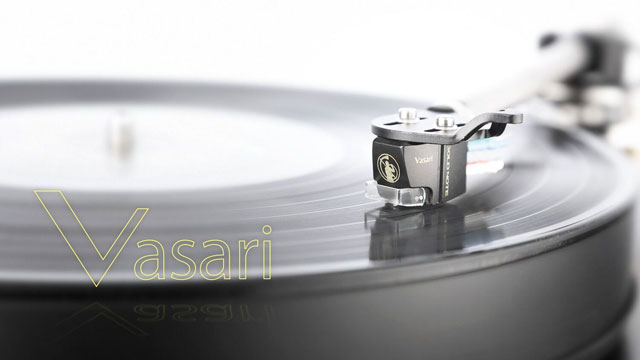
The Gold Note Vasari Gold Moving Coil Cartridge
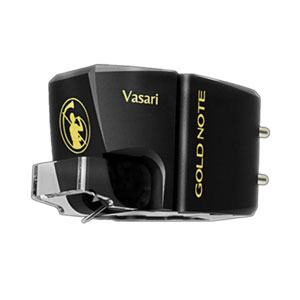 The Vasari Gold is the second rung on Gold Note’s ladder of cartridges (the line starts with the entry-level ES-78). The body is made of duralumin and it weighs 9.5g. It features a folded aluminum cantilever with an elliptical stylus, as well as copper wire and Alnico magnets. The cartridge is a standard half-inch mount, and – PRAISE BE! – has threaded mounting holes, making it far easier to screw together than those dinosaurs with fiddly, microscopic nuts (Get your mind out of the gutter!). Somewhat unusual among today’s cartridges, the Vasari also has an integral folding stylus guard, which is handy safety feature.
The Vasari Gold is the second rung on Gold Note’s ladder of cartridges (the line starts with the entry-level ES-78). The body is made of duralumin and it weighs 9.5g. It features a folded aluminum cantilever with an elliptical stylus, as well as copper wire and Alnico magnets. The cartridge is a standard half-inch mount, and – PRAISE BE! – has threaded mounting holes, making it far easier to screw together than those dinosaurs with fiddly, microscopic nuts (Get your mind out of the gutter!). Somewhat unusual among today’s cartridges, the Vasari also has an integral folding stylus guard, which is handy safety feature.
Most of the Vasari’s operating specifications are squarely in common moving magnet territory. It outputs 4mV with the recommended and ubiquitous 47k Ohm load. Frequency response is stated as 15-25,000Hz with channel separation of >22dBs. Recommended tracking force is a little higher than most moving magnets at 2g.
The Vasari was simple enough to set up – the threaded mounting holes reduce salty language by about 90%. As a proletarian moving magnet, I thought it would be a good match with my Technics 1200 M3G. Unfortunately, with the cartridge set at the recommended 2g tracking force in a 12g Jelco headshell – which is all I had on hand – and an extra bit of weight at the far end to get it to balance properly, there was no high treble to speak of, and the rest of the range was horribly wooly – very low-fi. Without doing the math, my guess is that the arm, headshell and extra weight represented too much mass and the cartridge suffered for it. It would have made for an unfortunate article.
But that just didn’t seem right to me. Goldnote builds some very sonically accomplished equipment and I had difficulty believing they’d put anything on the street that sounded so bad. So I tried a different turntable. The other Tech-12 in the house – a Mark I – is outfitted with an AudioQuest PT6 arm on a solid oak armboard (the stock Mark I arms were tin garbage), which has substantially less mass at its fixed headshell. That proved to make an enormous difference and what you’re reading from here out is the second version of the Vasari Gold’s review, with a far more positive conclusion.
It’s also worth noting that I removed the integral stylus guard so I could see the cantilever well enough to align it on my protractor, which was impossible with the guard attached, then popped it right back on for the review. I ran the Vasari though the built in moving magnet phono stage in my Cary preamp.
Approach
After listening to more expensive moving coils for at least a decade, I felt it was important to review the Vasari for exactly what it is – a moderately priced, entry level or possibly first step-up cartridge. It certainly isn’t trying to compete against the Lyra I usually listen to, and it seemed unfair to judge it against that standard. I had no expectations that the Vasari Gold would be a giant slayer. I took it on its own terms, judging it simply on whether it was engaging and sounded good.
What’s it sound like?
The Vasari throws a reasonably large soundstage, filling the space between the speakers, though not much further than that. Within that aural image the sound is tall and quite dense, erring on the side of warmth over a leaner clinical approach. Properly set up, it’s also very quiet, gliding over groove noise and light scratches with aplomb.
The most over-played reference record in my house – The Three, with Ray Brown, Joe Sample and Shelly Manne – was delivered with reasonable three dimensionality and good dynamic pop. The Three is a beautifully recorded direct-to-disc album that can really show off a system’s virtues or its shortcomings. The Vasari omitted some of the finest details – there was little of the ‘air’ that audiophiles love to blabber on about about, for example – but it captured all of the major components of the performance and integrated them nicely. Bass performance – physical slam – was especially good: taught, punchy and deep. Most importantly, the Vasari was very musical, holding my attention with a record that I’ve listened to hundreds of times. The Three was very enjoyable with this cartridge!
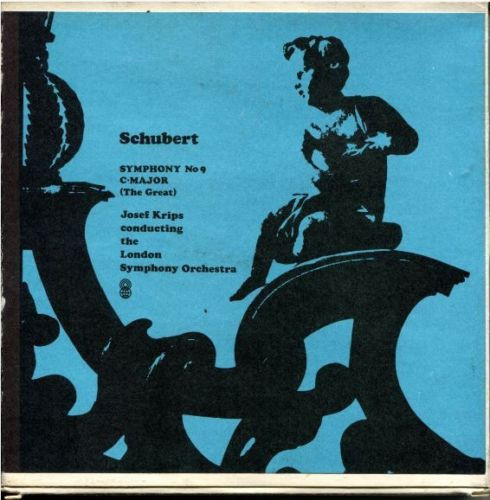 A more aggressive test of Vasari came in the form of a Speaker’s Corner reissue of Josef Krips conducting the London Symphony Orchestra performing Schubert’s Great C Major Symphony. Whatever “the most relaxing classical music in the universe” is, this ain’t it. This is enthusiastic, sometimes loud music, chock full of majestic, intertwined melodies that sometimes verge on imperial pageantry. The C Major is beautiful music, massively scaled and powerful. Here again, the Vasari acquitted itself well, capturing the excitement, drama, and grandeur of the music. It even did a few hi-fi tricks, placing the double basses deep into the soundstage. Yes, it missed a bit of treble sparkle and resolution, but it made up for that with tonal density, textural grip and an undiminished delivery of the music’s passion. Only once, in one of the loudest passage of this record, did the Vasari betray any difficulty tracking the vinyl, which appeared in the form of a bit of top end distortion, and even then just for a moment. The cartridge quickly regained its composure.
A more aggressive test of Vasari came in the form of a Speaker’s Corner reissue of Josef Krips conducting the London Symphony Orchestra performing Schubert’s Great C Major Symphony. Whatever “the most relaxing classical music in the universe” is, this ain’t it. This is enthusiastic, sometimes loud music, chock full of majestic, intertwined melodies that sometimes verge on imperial pageantry. The C Major is beautiful music, massively scaled and powerful. Here again, the Vasari acquitted itself well, capturing the excitement, drama, and grandeur of the music. It even did a few hi-fi tricks, placing the double basses deep into the soundstage. Yes, it missed a bit of treble sparkle and resolution, but it made up for that with tonal density, textural grip and an undiminished delivery of the music’s passion. Only once, in one of the loudest passage of this record, did the Vasari betray any difficulty tracking the vinyl, which appeared in the form of a bit of top end distortion, and even then just for a moment. The cartridge quickly regained its composure.
Audiophiles are often accused of listening to their equipment, but not to the music being played on it, and there’s some truth to this. We’re often guilty of dwelling on minute sonic details while overlooking the music itself – missing the orchestra for the piccolo player, one might say. The Vasari Gold was a cartridge that I could just turn on to enjoy the performance. It’s not the highest of hi-fi experiences, but in my system it got the essence and power of the performance right every time. Dare I say, it was a fun cartridge to listen to. For someone just getting into – or back into – records, on an appropriate tonearm the Vasari Gold moving magnet will give you a solid dose of what all the fuss is about.
The Gold Note Donatello Red High-Output Moving Coil Cartridge
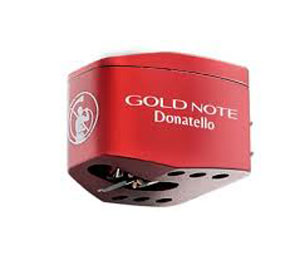 The Donatello Red is the next step up Gold Note’s ladder of cartridges from the Vasari Gold. It’s a high-output moving coil producing output of 1.8mV, with a specified tracking force of between 1.8 and 2.1 grams. Frequency response is listed as 10 – 35,000 Hz and a suggested load of 47k Ohms. Compliance is stated at 12 x 10-6cm/dyne with channel separation of >24dB. The cartridge body is also milled from Duralumin, anodized to a candy apple red, with standard half-inch mounting holes, which are also threaded (Yippie!). The cantilever is aluminum, tipped with a micro-elliptical stylus. Internal wire is copper with a Samarian-Cobalt magnet. Fit and finish appears to be excellent. The Donatello – and the Vasari too for that matter – looks like a high-quality piece.
The Donatello Red is the next step up Gold Note’s ladder of cartridges from the Vasari Gold. It’s a high-output moving coil producing output of 1.8mV, with a specified tracking force of between 1.8 and 2.1 grams. Frequency response is listed as 10 – 35,000 Hz and a suggested load of 47k Ohms. Compliance is stated at 12 x 10-6cm/dyne with channel separation of >24dB. The cartridge body is also milled from Duralumin, anodized to a candy apple red, with standard half-inch mounting holes, which are also threaded (Yippie!). The cantilever is aluminum, tipped with a micro-elliptical stylus. Internal wire is copper with a Samarian-Cobalt magnet. Fit and finish appears to be excellent. The Donatello – and the Vasari too for that matter – looks like a high-quality piece.
For this part of the review I switched to my newly reconstructed SOTA Star-Sapphire with its Jelco 750-DB arm. Setting up the Donatello was easy enough, but there were more variables to deal with than on the Tech-12, and I ultimately wasn’t able to get it aligned as perfectly as I would have liked. The Donatello’s body is light at 7grams, and very short front to back. Using a Dr. Feickert’s protractor with the guide pin directly inserted into the pivot point of the tonearm, and again with a 12g Jelco headshell, I was unable to move the cartridge far enough forward in the headshell to perfectly land the stylus on the Baerwald alignment crosshairs. The closest I could get it was a split millimeter behind the mark. The Lofgren alignment, which I prefer, was further still. Nevertheless, with the cartridge as far forward in the headshell as I could possibly get it, the cantilever was properly aligned on the longitudinal hash marks on the setup jig. With nothing to be done about that last half-millimeter I went ahead with the review.
Figuring out how best to amplify the Donatello also required some experimentation. Initially I ran it into the MM input of my Lyric phono stage, with its fixed 47k Ohm load, as suggested by the manufacturer, but I wasn’t crazy about that setup. With it’s 1.8mV output it seemed like the phono stage wasn’t producing enough gain, which in turn required a more aggressive hand with the volume knob to achieve normal listening volumes. Overall it sounded a little restrained. The manual does say that the Donatello can be run into a properly setup MC phono stage, so I tried that, adjusting the load down to 50k Ohms. This setup kept the pre-amp controls closer to what I’m used to and much more to my liking. The sound was also fuller, more robust and dynamic this way, at least with my equipment. I used this setup for the balance of the review.
Finally, unlike my Lyra, which requires a dead even 1.75g tracking force to sound its best, the Donatello offers a range. I started at about 1.8g, gradually worked up to 2.1g before backing it off to 2.0 grams, which seemed to be the sweet spot on my table. I also tried the arm with both its stock and heavy counterweights. The lower mass of the stock weight left the cartridge a little livelier, which I preferred.
Listening
Cold, right out of the box, with no break-in whatsoever, it was clear that the Donatello Red represented a significant step up in performance from the Vasari, which it should for more than twice the price. Top end extension and transparency were significantly improved, and overall clarity was better. With a few weeks worth of break-in it continued to noticeably improve as the treble smoothed out appreciably.
The Red has some great qualities. It’s a very lively cartridge with great boogie factor, the opposite of staid or boring. Listen to something that really cooks and you’ll feel the heat. It also offers excellent spacial queues and depth of field, placing musicians deep or forward in the stage as the recording provides for. The soundstage is also wide, extending outside the speakers, again dependent on the recording. Textures – say the vibrato of massed saxophones, or a rosined bow on cello strings – are also very well developed with a good facsimile of the bite you’d expect to hear from live instruments. It does not have quite the resolution or liquidity of the Lyra, but then it costs 1/3 the price, and it still manages to be very detailed without becoming hard, glaring or inorganic.
My newest favorite album, at least until my next favorite album arrives (‘favorite album’ has a short shelf-life around here), is the Sam Records reissue of Nathan Davis’ “Peace Treaty,” originally released on the French SFP label in 1965. By now it’s well known that Sam’s production values are very high, but they’ve really outdone themselves with this stereo pressing. The vinyl surface is perfect and the sonics are as good as the best from MoFi or Music Matters – really first rate.
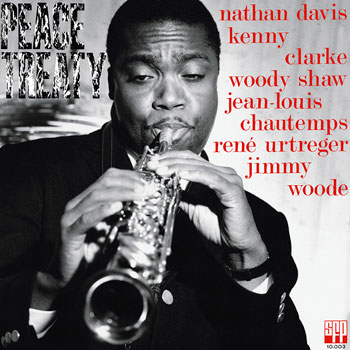 A sextet, featuring Davis on saxophone, the great Woody Shaw on trumpet, the wonderful if sometimes enigmatic Jimmy Woode on bass, the enduring Kenny Clarke on drums (listed in French as ‘baterie’) as well two French musicians, Rene Urtreger on piano and Jean-Louis Chautemps on baritone, this record is a close to a big band recording as you can get with only six musicians. Every track uses all three horns in powerful arrangements, with the baritone splitting duties as bass reinforcement as well as a solo instrument. The result is some of the best midrange textures I’ve listened to in my system, with depth and grip on the notes. If anything the treble is a little forward, but with the Red it remained entirely within the range of good sound.
A sextet, featuring Davis on saxophone, the great Woody Shaw on trumpet, the wonderful if sometimes enigmatic Jimmy Woode on bass, the enduring Kenny Clarke on drums (listed in French as ‘baterie’) as well two French musicians, Rene Urtreger on piano and Jean-Louis Chautemps on baritone, this record is a close to a big band recording as you can get with only six musicians. Every track uses all three horns in powerful arrangements, with the baritone splitting duties as bass reinforcement as well as a solo instrument. The result is some of the best midrange textures I’ve listened to in my system, with depth and grip on the notes. If anything the treble is a little forward, but with the Red it remained entirely within the range of good sound.
Musically, this record is one of the best of the era. This group swings like mad, drawing me completely into the performance each time I listened to it. The balance between arrangement and improvisation is about perfect, with two horns and the piano comping under whoever is taking a solo to provide dramatic undertones throughout. And what soloists! Everyone is in top form here: no weak spots, not a note put wrong anywhere. It’s a sublime performance.
I listen to a lot of jazz and I’ve become a bit jaded. It’s difficult for me to get really excited about any particular record anymore. Peace Treaty really turned my head. This is such a great record – just go buy it. More germane to this review, I absorbed all of that information played through the Donatello Red, and that’s a big win for this cartridge.
Final Thoughts
I was very pleased to spend time with both the Gold Note Vasari Gold and Donatello Red cartridges. Both represent a relatively modest investment, but both deliver performance where it counts, with engaging musical presentations. You do get more detail and refinement with the moving coil Red, but both cartridges brought out the dramatic and emotional qualities in whatever music I played with them. No wallflowers here: both of these pickups want to dance.
To my earlier point, both of these cartridges are squarely in the affordable end of the marketplace, but that is not betrayed as a compromise in the listening experience. The Vasari Gold and Donatello Red offer great performance at prices almost anyone can afford and that’s something everyone should applaud.


greg simmons
Specifications
Vasari Gold Price: $350 USA
Type: Moving Magnet Phono Pickup
Output: 4mV
Frequency Response: 15-25,000 Hz
Impedence: 1000Ω
Suggested Load: 47KΩ
Inductance: 500mH
Compliance: 10×10-6cm/dyne
Channel Separation: 22dB
Channel Balance:
Suggested VTF: 2g
Cantilever: Aluminum
Stylus: Elliptical 7.5*15.5μm
Internal Wire: Copper
Magnets: Alnico
Weight: 9.5g
Donatello Red Price $650 USA
Type: High Output Moving Coil Phono Pickup
Output: 1.8 mV
Frequency Response: 10-35,000 Hz
Impedance: 140Ω
Suggested Load: 47kΩ
Compliance: 12×10-6cm/dyne
Channel Separation: >24dB
Channel Balance:
Suggested VTF: 1.8 – 2.1g
Cantilever: Aluminum
Stylus: Micro Elliptical
Internal Wire: Copper
Magnet: Samarian-Cobalt
Weight: 7g
Address:
Gold Note
Via Della Gora 6
Montespertoli (Firenze)
Italy, 50025
+39 0571 675005
U.S. Distributor:
Rutherford Audio
12649 E Caley Ave
Centennial, CO 80111
+1 303-872-6285
info@rutherfordaudio.com
Associated Equipment:
Analog Front End
SOTA Sapphire turntable
Rek-O-Kut T12h turntable
Technics 1200 Mk 1 turntable
Technics 1200 M3G turntable (Stock Arm)
Jelco 9” SA-750 DB toneam (SOTA)
AudioQuest PT-6 tonearm (Tech-12 Mk I)
Karmadon 12” viscous damped unipivot tonearm (Rek-O-Kut)
Lyra Delos cartridge
Audio-Technica OC/9-III cartridge
Audio-Technica AT33Sa cartridge
Miyajima Spirit Mono cartridge
Digital Front End
Cambridge CXC CD transport
Cambridge 840C CD player (still lonely and collecting dust)
Amplification
Cary SLP-98P preamp w/ phono stage
Cary CAD 280 SA V12R power amplifier
Aurorasound SP-03H step-up transformer
Lyric Audio PS-10 MC/MM phono stage
Loudspeakers
Verity Audio Fidelity Encore
Cabling
AudioQuest Copperhead Interconnects
AudioQuest William Tell ZERO speaker cables
AudioQuest Water Interconnects
Zentara Reference ICs
Zentara Reference Speaker Cables
Nordost Blue Heaven ICs
Cullen power cables
AudioQuest NRG-Z3 power cables
MIT Z-Cable power cords
Accessories
AudioQuest Niagara 1200 power conditioner
Tice Box power conditioner
Nordost Sort Kones AC vibration dampers
Mapleshade Audio Rack
One thought on "Gold Note Vasari Gold and Donatello Red Phono cartridges by Greg Simmons"
Leave a Reply
Stereo Times Masthead
Publisher/Founder
Clement Perry
Editor
Dave Thomas
Senior Editors
Frank Alles, Mike Girardi, Russell Lichter, Terry London, Moreno Mitchell, Paul Szabady, Bill Wells, Mike Wright, and Stephen Yan,
Current Contributors
David Abramson, Tim Barrall, Dave Allison, Ron Cook, Lewis Dardick, John Hoffman, Dan Secula, Don Shaulis, Greg Simmons, Eric Teh, Greg Voth, Richard Willie, Ed Van Winkle, Rob Dockery, Richard Doron, and Daveed Turek
Site Management Clement Perry
Ad Designer: Martin Perry



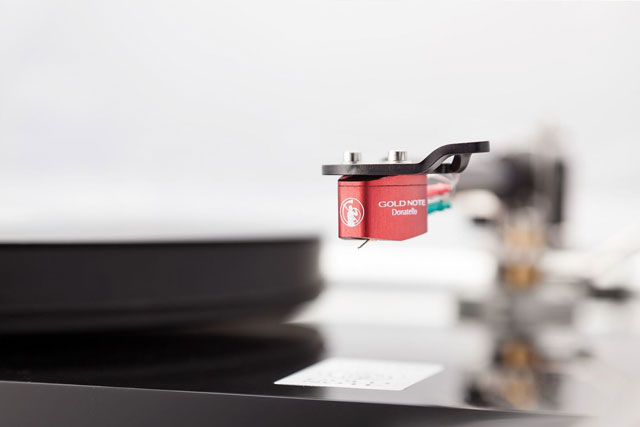


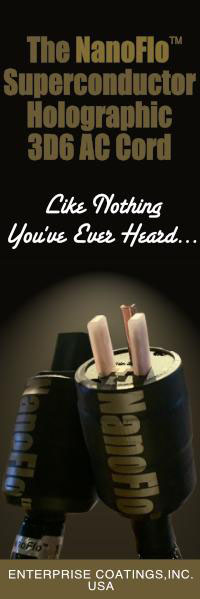

Hi, in part of amplification of the Donatello Red (setup of phono stage)….you wrote, that- “The manual does say that the Donatello can be run into a properly setup MC phono stage, so I tried that, adjusting the load down to 50k Ohms”. It was not meant that you reduced the load to 50 ohm – instead of the written 50k ohm. Thank you. Erik.